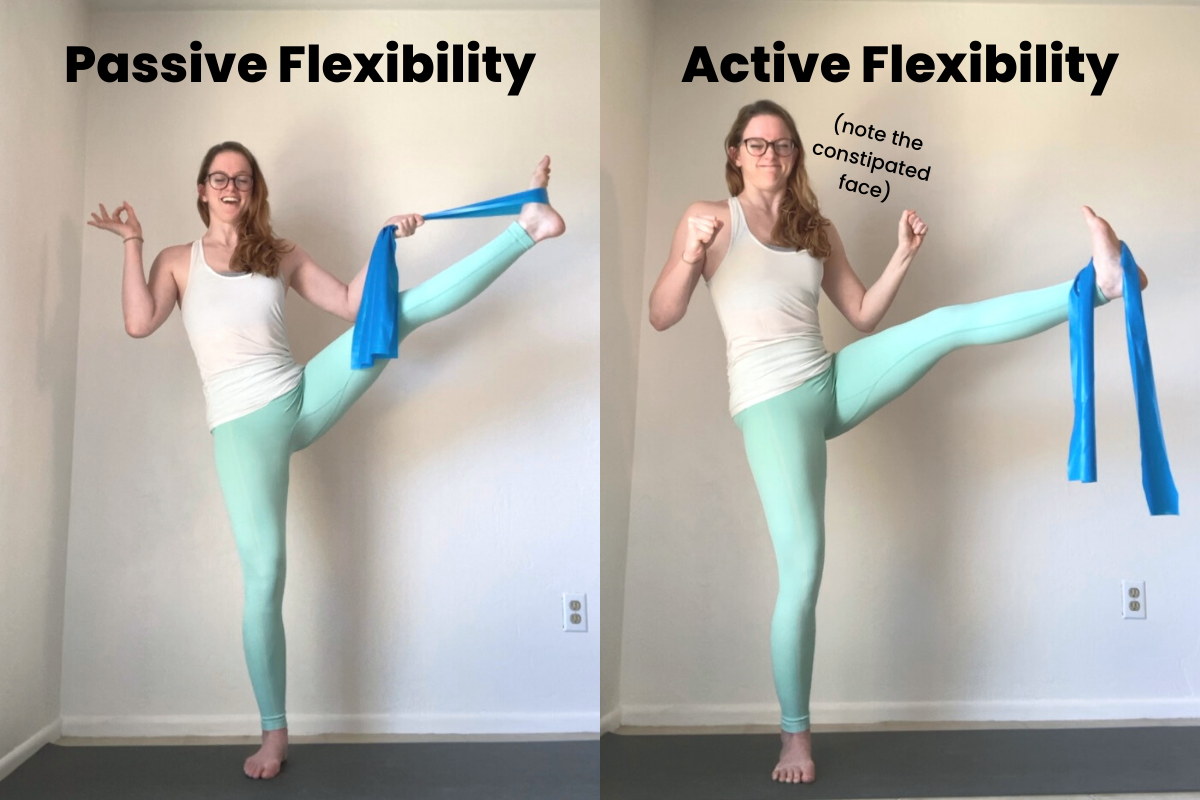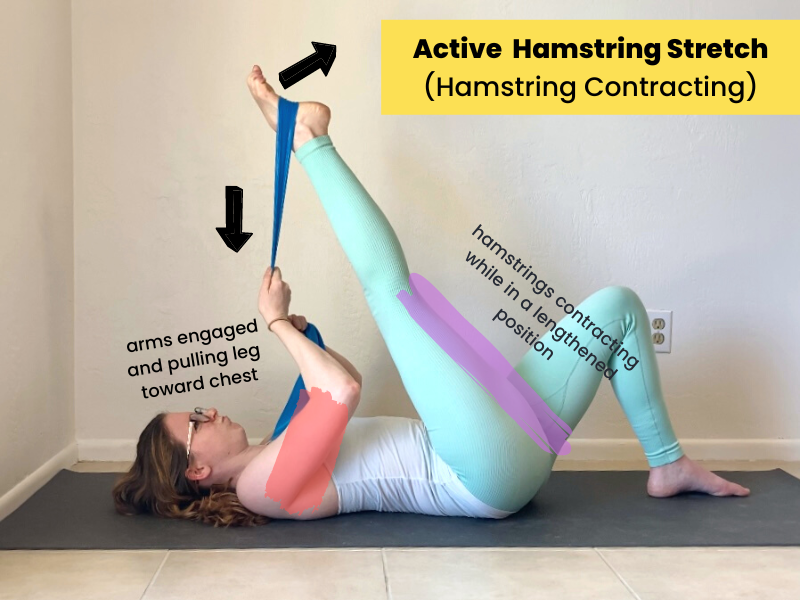What is “Active Flexibility” and Why is It So Important?
What is “Active Flexibility” and Why is It So Important?
Passive flexibility is the amount of flexibility you have in a joint with some external force helping you with the stretch (ex. using a strap to pull your leg in the air for a standing Y-scale). Active flexibility is the ability to use your muscles to support a stretch (ex. trying to lift or hold your straight leg in the air without using your hands).
Why is active flexibility helpful?
Your body naturally wants to protect your muscles and joints from what it deems “unsafe” positions. The stretch reflex kicks in to contract a muscle to prevent further lengthening when you near the safe end range of motion - this is the tension you feel in a muscle when doing a passive stretch. Without the stretch reflex, it would be possible to lengthen our muscles past the point where they can still contract and do work, resulting in injury. This is why physically “pushing” yourself past the stretch reflex (to the point where you feel pain) often results in muscle strains.
Active flexibility basically helps make your muscles stronger to support an increased range of motion in a joint, meaning you can safely stretch deeper before that stretch reflex kicks in to prevent over-stretching. You can think about it as “strengthening while you stretch.”
Active flexibility exercises can involve either:
Contracting the muscle being lengthened, OR
Contracting the “helper” muscles that pull that muscle into a lengthened position
Agonists, antagonists, and synergists, oh my!
Let’s take a brief step back to review a concept from musculoskeletal anatomy that will help with this concept: agonist and antagonist muscles. While there might be several muscles that help perform an action on a joint, the main muscle contracting is called the agonist. Thankfully our bodies are smart enough to not try to contract opposing muscles when you are trying to move (which would be pretty darn inefficient) - so the opposing muscle relaxes to allow the movement to occur - this muscle is called the antagonist. The act of allowing the opposing muscle to relax is called reciprocal inhibition (the agonist contracts, which inhibits the antagonist from contracting).
Note: This is a bit of an oversimplification because antagonists do technically contract to control the movement of a joint, and you’ve got other “synergists” helping with the movement too - but all that nuance is a topic for another blog post!
For example, if you are lying on your back and want to kick your leg toward your chest for a hamstring stretch, your hip flexors (agonists) contract to pull your leg up, and your hamstrings (antagonists) relax to allow the movement to happen. So by contracting your hip flexors, you are letting your hamstrings lengthen into a stretch. I hate to use the word “hack” because it sounds click bait-y and awful, but you can think of these types of exercises as “hacks” for your nervous system to allow certain muscles to relax in a stretch.
Conversely, you could use a strap to pull your leg toward your chest to find a hamstring stretch (which would be a “passive” stretch since your arms are doing the support work), but then contract your hamstrings by kicking your foot into the strap. That means you’re telling your hamstrings to contract and do work while they’re in a lengthened state, which will help them get stronger in that lengthened position! In this example, your hamstrings are now the agonist because they are working to extend your hip (kicking your leg back to the floor).
Both types of active stretches - treating the muscle you want to stretch as an antagonist by contracting the opposing muscle, and treating it as an agonist by contracting it while it’s in a lengthened position - are helpful for improving your strength and flexibility over time, so be sure to include both in your training!
Looking for More Examples of Active Stretches?
Check out the Flexopedia! I built that as a free online library of stretches and flexibility exercises, broken down by muscle group, challenge level, and type of stretch (passive vs. active).






